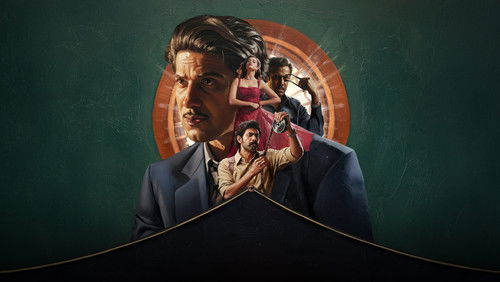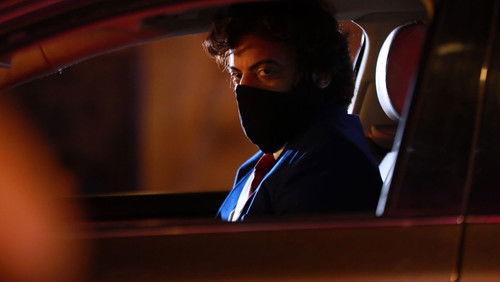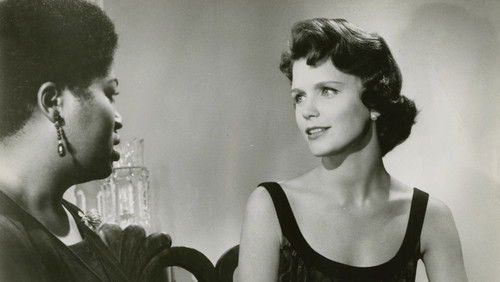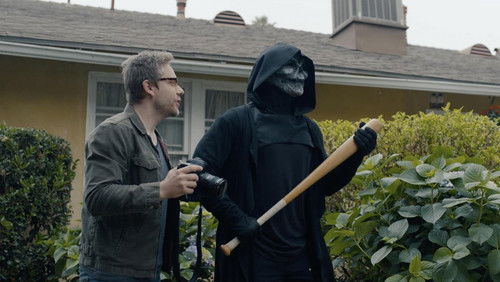Elf Uhr nachts (1965)
59KElf Uhr nachts: Directed by Jean-Luc Godard. With Jean-Paul Belmondo, Anna Karina, Graziella Galvani, Aicha Abadir. Pierrot escapes his boring society and travels from Paris to the Mediterranean Sea with Marianne, a girl chased by hit-men from Algeria. They lead an unorthodox life, always on the run.
“We often overlook the flaws of an artistu0026#39;s earlier work and then ignore their later, more perfect and mature pieces because they lack the daring boldness and innovation evident in the first ones. This is especially true in Godardu0026#39;s case. Breathless was new, fresh, fun and stylish; it was and still is considered a classic and his masterpiece. But as great as it is, Breathless is mostly about technical innovation and lacks the thematic depth of its creatoru0026#39;s later work. Godard only brushes along subjects such as class division and the nature of film which, among many others, he will devour in films to come, in our case, Pierrot le fou.u003cbr/u003eu003cbr/u003eI said u0026#39;perfect and matureu0026#39; but those are qualities not typical of Godard. His films are always u0026#39;a work in progressu0026#39; and heu0026#39;s not afraid of taking risks. Thatu0026#39;s why his work is usually considered ugly, childish, pretentious etc. But one should always be open-minded and never expect the ordinary when going to a Godard film. To begin with, itu0026#39;s impossible to confine Pierrot le fou to a particular genre as it doesnu0026#39;t adhere to a single form or convention but is, instead, a blend of comedy, romance, political thriller, noir, musical and so on. It is a road picture that is able to follow a straight narrative as much as a car is able to follow a straight road with Ferdinand behind the wheel. The director confesses that when he began working on his movie u0026quot;one week before, I was completely panicked, I didnu0026#39;t know what I should do. Based on the book, we had already established all the locations, we had hired the people… and I was wondering what we were going to do with it all.u0026quot;u003cbr/u003eu003cbr/u003eGodard has been criticized time and again for the purposeful disorientation of his audience. On top of a discontinuous plot he employs a wide array of u0026#39;sensorial techniques that serve to fragment the cinematic narrative.u0026#39; Some of his trademark stylistic devices, including loud colors, obtrusive voice overs, rapid jump shots, out of sync sound etc. along with the abrupt interchanges between tones (e.g. comic – serious) constitute for a greater alienation of the viewer. The film opens with the voice of Ferdinand reading a passage, u0026quot;Velázquez, past the age of fifty, no longer painted specific objects. He drifted around things like the air, like twilight, catching unawares in the shimmering shadows the nuances of color that he transformed into the invisible core of his silent symphonyu0026quot;. Similarly, Godard is on a quest for another kind of cinematic art, one that isnu0026#39;t concerned with visual presentation of objects and characters as much as with u0026quot;what lies in between people: space, sound and color.u0026quot;u003cbr/u003eu003cbr/u003eWith Pierrot le fou, Godard wanted to break away from conventional cinemau0026#39;s chains, go beyond any forms and formulas and attain something out of the ordinary clichè. At one point in the movie Ferdinand is at a social gathering and meets an American director. When asked for the definition of cinema, he responds: u0026quot;A film is like a battleground. Itu0026#39;s love, hate, action, violence, and death. In one word: emotions.u0026quot; This explains precisely what Godard sought to achieve. He wanted to transfer emotions directly onto the viewer – not through actors and their characters but by means of style. Abandoning all conventional drama and substituting it with flickering prime colors, godlike voice overs, eerie music etc. in the ultimate search for an instant, sublime surge of feelings was a chance Godard was willing to take. He considered this destruction of old rules and creation of new as something natural and necessary. As he himself asserts, u0026quot;literary critics often praise works like Ulysses or Endgame because they exhaust a certain genre, they close the doors on it. But in the cinema we are always praising works which open doors.u0026quot;u003cbr/u003eu003cbr/u003eGodard has created a film in the free form. A film deprived of structure. One that does not make any promises to the viewer but the assertion that love is beyond human control. Just like with love, nothing makes linear sense and every moment is more important than the last. Pierrot le fou is not an easy film to take in. It places great demands on its audience. Some might find them overwhelming, not worth the effort. But others, those that manage to let go and keep going forward into Godardu0026#39;s chaotic but passionate exploration of reality, might just enjoy the ride.”









